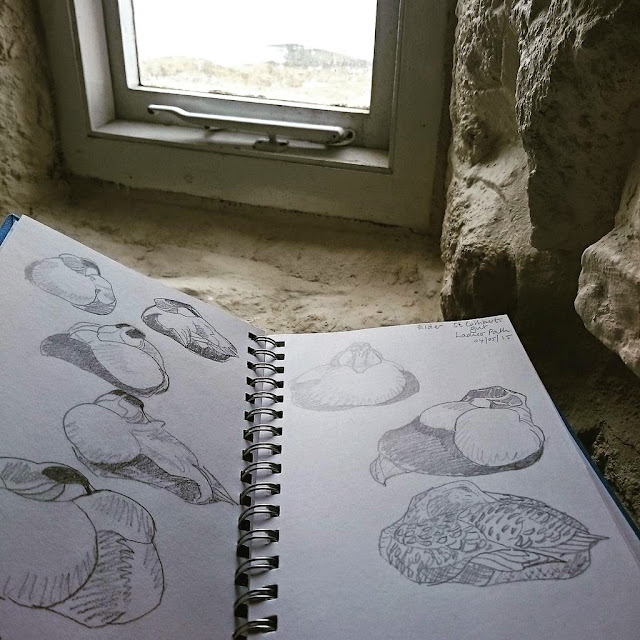 |
| Credit: Wynona Legg |
With the breeding season now fully underway on the Farne Islands there is no better time to come and visit. In an earlier posting on the blog we wrote about the Puffin, but the Puffin is just one of the amazing birds on the islands. Rhian Davies, one of the Farne's Assistant Rangers, now looks at another popular species, the Eider, known locally as the Cuddy Duck.
"The striking looks of the
male eider and the close proximity of nesting females to the paths on the Farne
Islands, make these ducks a firm favourite here.
"From a distance, the male
common eider (Somateria mollissima)
appears mainly black and white. With closer study you will notice the olive
green markings running down the back of the neck. The breast feathers are a
flushed pinky peach and the beak a yellowy green wedge.
 |
| Credit: S Lee |
"In contrast female eiders
are a cryptic pattern of browns. They could be mistaken for an entirely
different species compared to the male, but note the body shape. Both female
and male are appropriately buoyant looking for a duck that spends most of its
time at sea and have an obvious wedge shaped face.
"The need for the female to
be so well camouflaged becomes apparent now in the breeding season. She will
spend 25 to 28 days incubating the eggs in a nest on the ground. The main form
of protection for the eggs from predators such as herring gulls is to keep them
hidden, which her camouflage allows her to do.
"Eider nests are
especially cosy due to the use of the female’s downy feathers to line them. It
is widely believed that female eiders pluck the feathers from themselves, but
it has been suggested that they actually simply shed them. This is thought to
be as a result of a change in hormone levels after mating, which stimulates the
feathers to moult.
"After the last egg has been
laid the female will not leave the nest unless disturbed. She survives on her
body fat and the odd insect she can forage from the area immediately around
where she is sat.
"We are lucky on the Farne
Islands to gain such close views of these birds. Many females choose to nest
close to the path as the passage of people keeps potential predators away from
the nests. This proximity must be treated with respect so when stopping to look
or photograph the nests please do so at a short distance so as not to disturb
them. Many of the eggs are getting close to hatching so you may be lucky enough
to spot the ducklings heading to sea too in the coming days."
For information about visiting the islands, see www.nationaltrust.org.uk/farne-islands . You can follow all the hatching news, including that of the eiders, via the rangers' updates on Twitter @NTFarneIslands








